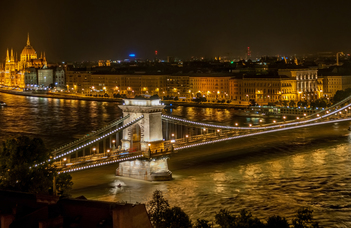Venue
Venues BSU 2024

Hungary is located in East-Central Europe and it occupies an area of 93 030 km2. The country’s population is less than 10 million including several minorities. The capital city is Budapest with almost two million inhabitants. Hungary borders Austria, Slovakia, Ukraine, Romania, Serbia, Croatia and Slovenia. Hungary is a member of OECD, NATO, EU and the Schengen Zone. The official language is Hungarian and the currency is the Hungarian Forint (HUF).
Hungary is one of the 15 most popular tourist destinations of the world. The country is also a home to numerous World Heritage Sites, UNESCO Biosphere Reserves, the largest water cave system and the second largest thermal lake in the world (Lake Hévíz), the largest lake in Central Europe (Lake Balaton) and the largest natural grasslands in Europe (Hortobágy).
Budapest, the capital city of Hungary is located centrally in Hungary. From wherever you come from abroad, you can directly arrive in Budapest. Also, there is direct train or bus connection to major cities in Hungary.
With about 1.7 million inhabitants, Budapest provides an enjoyable and vibrant atmosphere for international students during their studies. The large number of sights to visit (many of them parts of UNESCO World Heritage), vibrant cultural life, the reasonable living costs, well-developed and easy-to-use public transport network, and safety make Budapest popular among international students.
Course locations
Hungary on a Plate: Bite-size History of Hungarian Gastronomy: ELTE Faculty of Law, 1053 Budapest, Egyetem tér 1-3, Room A/1
Sustainability in Practice: from science to business: ELTE Faculty of Science, 1117 Budapest, Pázmány Péter sétány 1/C, Building South, Room: 2.502 (2nd floor)
Spirituality and religions in European urban spaces: ELTE Faculty of Education and Psychology, 1075 Budapest, Kazinczy street 23–27., Ground floor, Room 4.
Re-imagin(in)g environmental issues: ELTE Faculty of Humanities, Building R5, Room 137
Data Visualization: ELTE Faculty of Humanities, 1088 Budapest, Múzeum krt. 6–8.; Main Building, Ground floor, Computer lab 37
Introduction to tools and methods of Artificial Intelligence: online
Campus maps to help with orientation


